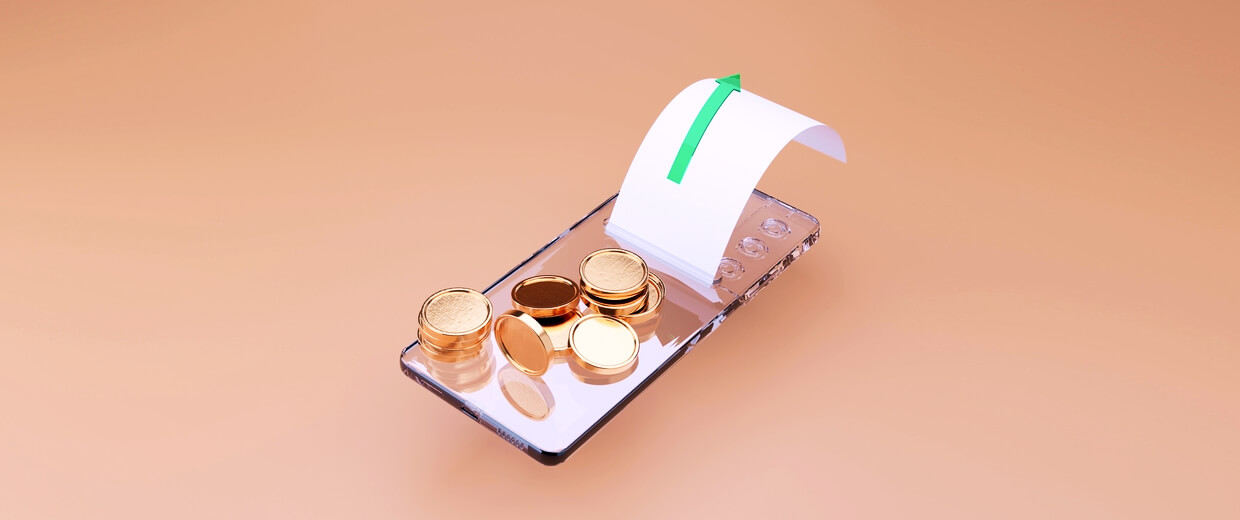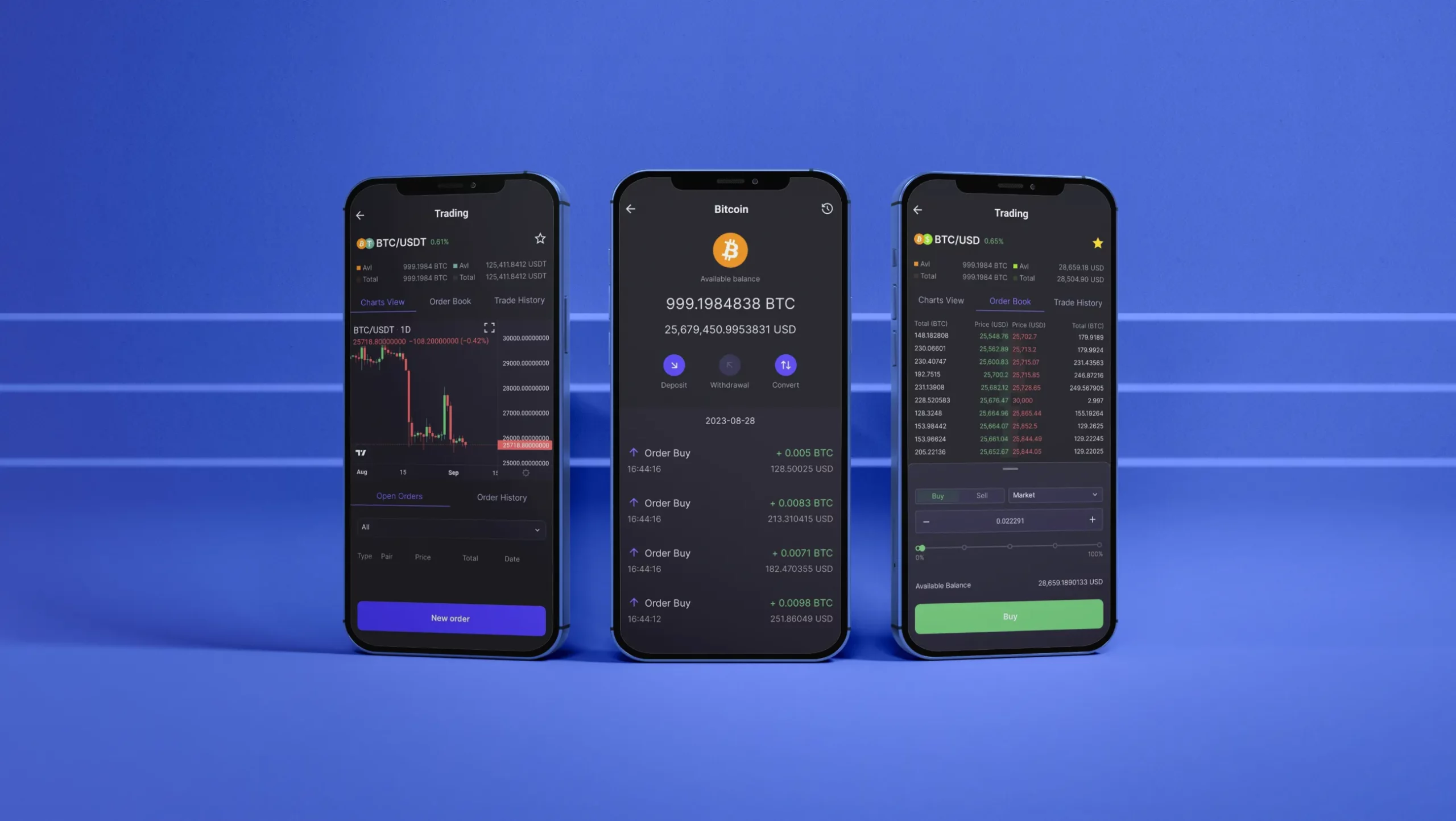- Crypto Solutions
- By business model
- By auction model
- Services
- Case studies
- Contact
Protecting your crypto wallet is a mission-critical task. In a reality where the security of your investments hinges on your diligence, understanding the vulnerabilities and taking protective measures are essential. This comprehensive guide explores the intricacies of wallet security, providing you with the knowledge and tools to safeguard your digital fortune.
What Is Crypto Wallet?
A crypto wallet platform is a digital tool that allows storing, sending, receiving cryptocurrencies, or any other digital asset. Crypto wallets come with two essential elements:
- A public key is the cryptocurrency wallet’s equivalent of a public address. This alphanumeric string enables you to receive digital currency into your wallet. The public key is openly visible on the blockchain. Your public key reveals no sensitive information and cannot be used to withdraw funds or compromise your wallet’s security. So, it is safe to share your public key just like you share your email address.
- A private key is your crypto wallet’s most sensitive component, akin to a password. It’s typically a lengthy, randomly generated string of characters. The private key should be kept private, since anyone with access to your private key can control your wallet and its assets. Never share your private key or expose it to the prying eyes of the internet.
Types of Crypto Wallets
Hardware Wallets
Hardware wallets are compact, USB-like devices that offer a high level of protection for your digital assets. They store your private keys in an offline, tamper-resistant environment, which makes hardware wallets impervious to most online threats.
Pros:
- Security: private keys are stored offline, inaccessible to cybercriminals;
- Immunity to Malware: hardware wallets are resistant to malware and hacking attempts;
- Long-Term Storage: hardware wallets are best used for securing significant cryptocurrency holdings;
- Simple Use: user-friendly interfaces make hardware wallets accessible to beginners;
- Multi-Currency Support: hardware wallets support many cryptocurrencies.
Cons:
- Upfront Payment: hardware wallets typically come with an upfront purchase cost;
- Physical Vulnerability: hardware wallets can be lost, damaged, or stolen;
- Limited Accessibility: hardware wallets are not convenient for frequent transactions;
- Set-Up Complexity: initial setup is complex in hardware wallets.
Software Wallets
Software wallets are applications or programs that can run on computers or mobile devices, allowing users to send, receive, and manage digital assets.
Pros:
- Convenience: software wallets are easily accessible for day-to-day transactions;
- Quick Transactions: software wallets feature streamlined interface for swift cryptocurrency management;
- Multi-Platform Compatibility: software wallets are compatible with various operating systems and devices;
- Multi-Currency Support: software wallets support a wide range of cryptocurrencies;
- Regular Updates: developers often release updates for software wallets to enhance security.
Cons:
- Vulnerability: software wallets are susceptible to malware and hacking;
- Dependency on Device: the security of the software wallet depends on the device’s integrity;
- Risk of Phishing: users can fall victim to phishing attacks, compromising private keys;
- Limited Storage: software wallet is less secure for significant cryptocurrency storage due to online exposure.
Mobile Wallets
Mobile wallets are the on-the-go solution for cryptocurrency enthusiasts. These applications are tailored for smartphones, offering the convenience of managing digital assets from the palm of your hand.
Pros:
- Accessibility: mobile wallets are suitable for daily transactions and payments;
- Intuitive Interface: user-friendly interfaces are designed for a seamless mobile experience;
- Convenience: users can send and receive cryptocurrencies on the move;
- Multi-Currency Support: mobile wallets accommodate various digital currencies;
- Two-Factor Authentication (2FA): mobile wallets have enhanced security features for added protection.
Cons:
- Device Vulnerability: mobile devices are susceptible to loss, theft, or malware;
- Limited Storage: not ideal for large cryptocurrency holdings due to potential security risks;
- Regular Updates Required: users must keep mobile wallets and devices updated to stay secure;
- Potential Phishing: users may encounter phishing attacks on mobile platforms if not cautious.
Paper Wallets
A paper wallet is a physical document with your public and private keys. It’s an offline, unhackable way to store your cryptocurrencies.
Pros:
- Unhackable Offline Storage: paper wallets are impervious to online threats like hacking and malware;
- Low Price: paper wallets come at no additional cost, except for printing and paper;
- Security through Physicality: Private keys on paper are immune to digital attacks and can be stored in a secure physical location.
Cons:
- Physical Vulnerability: Paper can be damaged, lost, or stolen;
- Lack of Convenience: retrieving and using funds can be cumbersome;
- No Recovery Mechanism: If lost or destroyed, paper wallets are unrecoverable without original keys.
How to Choose Crypto Wallet?
Consider Security
When assessing potential crypto wallets, prioritize security features. Look for an encrypted wallet. Multi-signature support is another essential component that enhances security by requiring multiple private keys to authorize transactions.
Evaluate the wallet’s reputation in the crypto community. Look for reviews and user feedback to make certain that the wallet is reliable and trustworthy. Check whether the wallet provider has had any security breaches or incidents in the past. A clean track record is a good indicator of a secure wallet.
Examine User-Friendliness
Cryptocurrency can be complex, but your wallet doesn’t need to be. A user-friendly interface will make your crypto journey more enjoyable and less prone to errors. A simple, intuitive design can help you navigate the wallet’s features with confidence. Read user reviews and consider the experiences of others to determine how easy it is to set up and use the wallet.
Check Supported Cryptocurrencies
Ascertain that the wallet supports the specific cryptocurrencies you plan to use. While most wallets are Bitcoin-compatible, not all of them support a wide range of altcoins. Verify the wallet’s compatibility with the digital currencies you want to manage. Some wallets offer broader support for various tokens.
Choose Mobile or Desktop
Decide whether you prefer a mobile or desktop wallet. Mobile wallets provide the convenience of managing your assets on the go, while desktop wallets may offer more robust features and potentially enhanced security. The choice between the two largely depends on your lifestyle and usage patterns.
Think About Cold and Hot Wallets
Determine whether you need a hot wallet or a cold wallet. A hot wallet is connected to the internet and is suitable for daily transactions. The hot wallet is convenient but less secure. A cold wallet, on the other hand, keeps your private keys offline, making it an excellent choice for long-term storage and security. Many users opt for a combination of both, using hot wallets for regular transactions and cold wallets for secure storage.
Research Market
Before making a final decision, do thorough research on potential wallet options. Explore wallet providers’ websites, read their documentation, and take note of their security features. Investigate online reviews, forum discussions, and social media to gather insights from other users. Pay attention to any negative feedback, especially concerning security breaches or vulnerabilities.
Ensure Backup and Recovery
Make sure the wallet has a reliable and user-friendly backup and recovery process. Most wallets provide a recovery phrase, a set of words that can be used to restore access to your wallet. Store this phrase securely.
Assess Customer Support
In the event of technical issues or questions, responsive and helpful support is invaluable. Contact their support team with any inquiries you may have, gauging their responsiveness and willingness to assist you.
Crypto Wallet Security
To fortify your wallet against potential cyber threats, it’s crucial to understand the vulnerabilities and implement protective measures efficiently.
What Are The Threats?
- Phishing Attacks: cybercriminals often employ deceptive emails or websites to trick users into revealing their private keys;
- Malware and Hacking: malicious software can compromise your wallet’s security by infecting your device and capturing private key information. Hackers may exploit vulnerabilities in your system or wallet software;
- Social Engineering: crafty scammers may attempt to manipulate or deceive individuals into revealing private key information, often through personal interactions or fake support services;
- Physical Threats: loss, theft, or damage to your wallet’s physical storage medium, such as hardware or paper wallets, can result in the irrevocable loss of assets.
How To Keep Crypto Wallet Secure?
- Phishing Protection: always verify the legitimacy of emails or websites. Avoid clicking on suspicious links and be cautious when sharing your private key information. Be certain you are interacting with legitimate sources;
- Malware Defense: protect your device with reliable antivirus and anti-malware software. Regularly update your operating system and wallet software to patch vulnerabilities. Use a hardware wallet for significant assets;
- Social Engineering Awareness: educate yourself about common social engineering tactics and never share your private key with anyone, regardless of their claims. Be cautious about unsolicited requests for private key information;
- Physical Security: safeguard your physical wallet storage. For paper wallets, store them in a secure, water- and fireproof location. For hardware wallets, keep them in a physically secure place;
- Two-Factor Authentication (2FA): enable 2FA whenever possible. This provides an additional layer of protection, requiring verification from a secondary source before accessing your wallet;
- Regular Backups: maintain up-to-date backups of your wallet. Store your backup phrases securely in offline locations, away from potential threats;
- Secure Wi-Fi: make certain of your internet connection. Use trusted networks and avoid public or unsecured connections;
- Regular Monitoring: periodically review your wallet’s transaction history to detect any unauthorized or suspicious activity;
- Keep Software Updated: systematically update your wallet software to patch any security vulnerabilities and establish the latest security features.
FAQ
Is A Blockchain Wallet Safe?
The safety of a Blockchain wallet primarily depends on your security practices and the wallet provider. The Blockchain network itself is secure. However, individual wallet security varies. Always choose reputable wallet providers, enable two-factor authentication (2FA), regularly update your software, and practice caution when sharing private key information.
Is The Crypto App Safe?
The safety of a crypto app depends on several factors. Reputable crypto apps often prioritize security with encryption and user authentication. To ensure the safety of your crypto app, download it from official sources, enable app-level security features, like PIN codes or biometric authentication, and repeatedly update the app.
Should I Encrypt My Bitcoin Wallet?
Yes, encrypting your Bitcoin wallet is a fundamental security measure. Wallet encryption adds an extra layer of protection by requiring a password or passphrase to access your private keys. This ensures that even if your wallet is compromised, unauthorized access is prevented. Always enable wallet encryption, use a strong and unique password, and store it securely.







